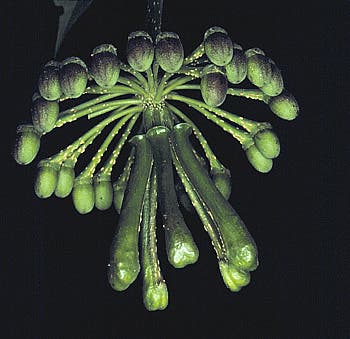A lot of attenton has been given to plants that visually attract pollinating bees, through bright colours and spectacular designs, but bats play a very important role for pollinating as well, and there is much we have yet to understand about how they can be attracted by plants.
Researchers have now discovered that a species of rainforest vine, pollinated by bats, has evolved special shaped leaves with such conspicuous echoes that bats can find it twice as fast using echolocation.
Located in Cuba, Marcgravia evenia has developed a distinctively shaped concave leaf located close to the flower which has amazing acoustic properties. Scientists discovered that it acts as an ideal echo beacon, sending back strong and clear echoes in all directions, practically creating its own signature that bats can easily notce and follow.
Scientists trained bats to search for a small plant located in an artificial background, and the results were conclusive. Dr Marc Holderied of Bristol’s School of Biological Sciences, co-author of the paper, said:
“This echo beacon has benefits for both the plant and the bats. On one hand, it increases the foraging efficiency of nectar-feeding bats, which is of particular importance as they have to pay hundreds of visits to flowers each night to fulfill their energy needs. On the other hand, the M. evenia vine occurs in such low abundance that it requires highly mobile pollinators.”
Was this helpful?




